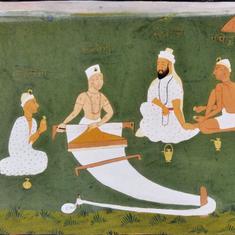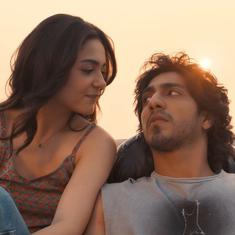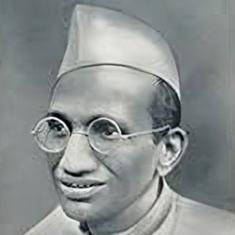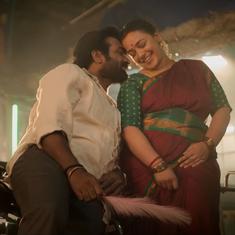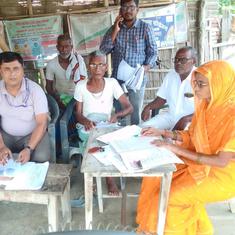Premchand’s love for the countryside is evident in his fictional and non-fictional writings. He has written several extremely evocative stories such as Panchayat, Do Bail, Idgah, Atma Ram, depicting the pristine village life of simplicity, honesty and quiet contentment. In fact, his fictional corpus, if read uncritically, would lend itself to an easy binary between country life and city life, one good and the other almost irredeemably evil. Yet, we have to recognise that he does not depict country life as an idyll shorn of all evils. There are stories such as A Positive Change (Vidhwans), A Home for an Orphan (Grihdaah) and The Road to Salvation (Mukti Marg) that de-romanticise and demystify village life and depict the author’s awareness of the imperfections and blind spots in the supposed idyll. Thus, the apparent binary that seems to work in case of some novels and stories cannot be stretched beyond a point.
Premchand’s deep interest in the simple life of peasants extended to his love for animals, particularly draught animals, treated most cruelly in India.
Very few writers have depicted such an intimate bond between animals and human beings. Premchand depicts animals as endowed with emotions just as human beings are, responding to love and affection just as human beings do, and are fully deserving of human compassion. Often, the duplicity, cruelty and betrayal in the human world is contrasted with the unconditional love and loyalty displayed by animals towards their masters and those who care for them. It is a heart-wrenching moment, as shown in Money for Deliverance (Muktidhan) and Sacrifice (Qurbani) when a peasant has to part with his animals because of want and destitution.
The deep compassion with which animal life has been depicted in Holy Judges (Panchayat), Reincarnation (Purva Sanskar), The Story of Two Bullocks (Do Bailon ki Katha) and The Roaming Monkey (Salilani Bandar) are treasures of world literature. Stories such as Turf War (Adhikar Chinta) and Defending One’s Liberty (Swatt Raksha), written in a humorous and symbolic vein, show how a dog fiercely protects his turf and how a horse defeats all the machinations of human beings to make him work on a Sunday which is his day of rest, rightfully earned after working for six days of the week! In The Roaming Monkey, the author shows how a monkey earns money by showing tricks of different kinds and thus looks after the wife of his owner, nurtures her and brings her back from the brink of lunacy. In The Price of Milk (Doodh ki Qeemat) we have the spectacle of goats feeding a baby with milk from their own udders, thereby saving its life. The baby has been denied milk by its own mother because she considers it a tentar, an “evil” child destined to be the cause of death of one of the parents/ members of the family, and wishes it dead.
In A Daughter’s Possessions (Beti ka Dhan) Sakkhu Choudhury finds tears streaming down the eyes of his oxen in his moments of grief when the zamindar was going to evict him from his home, and when his own sons were totally indifferent to his plight. In the story, Two Brothers (Do Bhai) the narrator contrasts the greed and lack of empathy of the elder brother Krishna for his younger brother, Balaram, whose property he wants to grab with the deep bond between two bullocks one of which refused to touch any food for three days when the other was separated from it.
Several very popular stories of Premchand deal with Hindu-Muslim relation. He was deeply interested and invested in a cordial relationship between Hindus and Muslims, a fact which is evident in both his fictional and non-fictional writings. He had no doubt that the independence and progress of the country depended substantially on the harmonious relationship between these two dominant religious groups in India.
Early in his life he was introduced to Muslim culture and Islam through learning Persian and Urdu and the maulvi who taught him.
He was also familiar with ideals of Hinduism, both the orthodox variety and the reformist trend of Arya Samaj to which his family owed allegiance. This, coupled with his inherently secular temperament, provided him a unique vantage point from which he could write fairly and fearlessly about both the communities in an even-handed way. In fact, he was the only writer of his generation in any Indian language, not excepting Tagore, to write about the external and internal lives of the members of both the communities with a kind of insight, empathy and intimacy that have not been matched since. I cannot think of any other Indian writer who possessed that kind of double vision. During his lifetime, the relationship between Hindus and Muslims went through particularly volatile and turbulent phases, but he was always unwavering in his belief in pluralism and kept the faith. Stories like The Holy Judges, Idgah, The Greater Pilgrimage (Hajj-e Akbar), The Temple and the Mosque (Mandir aur Masjid), The Prophet’s Justice (Nabi ka Niti Nirvaah), Forgiveness (Kshama) and essays such as, Islamic Civilization (Islami Sabhyata) demonstrate how deeply he knew about Islamic culture and the intimate lives of Muslim families, and how the daily lives of the Hindus and the Muslims were intertwined, particularly in the countryside. Towards the end of the second decade of the twentieth century when the Hindu-Muslim relation was at the lowest ebb, Premchand wrote his play Karbala, on a deeply emotional subject for Muslims, to cement the bonds of Hindu-Muslim unity.
Premchand seems immensely relevant in today’s India when history is being sought to be rewritten and Muslims are being constantly cast in the role of the “other” and made accountable for all the real and imagined atrocities of the Muslim rulers of the past! In his own time, he saw with bewilderment how “Whenever a Muslim king is remembered, we evoke Aurangzeb”, a remark that reverberates with contemporary resonance, indicating the agenda of some people who always sought to frustrate any attempt at a broader understanding and reconciliation between these two communities. He was opposed to religious sectarianism and orthodoxy in any form. This will be evident if one reads his stories of the Moteram series and a story like The Holy War (Jihad) where he anticipates what goes today by the misleading and erroneous name of “Islamic” terror together. In this context, Syed Akbar Hyder’s comments seem particularly apt:
Premchand archives Hindu-Muslim relationship in mutually respectable terms that move beyond Aurangzeb and his times into a temporal zone reflecting a more pluralistic Islam...By ideologically fracturing religious communities, he undermines the antagonistic communal bifurcation within the colonial milieu that posited Hindu and Muslim as age-old enemies whose scriptures determined their mode of thinking and living.
Excerpted with permission from the Introduction to Premchand: The Complete Short Stories, edited by M Asaduddin.

